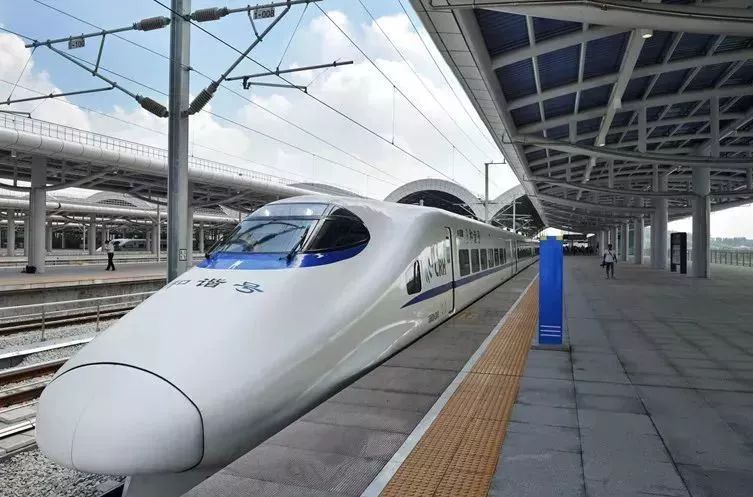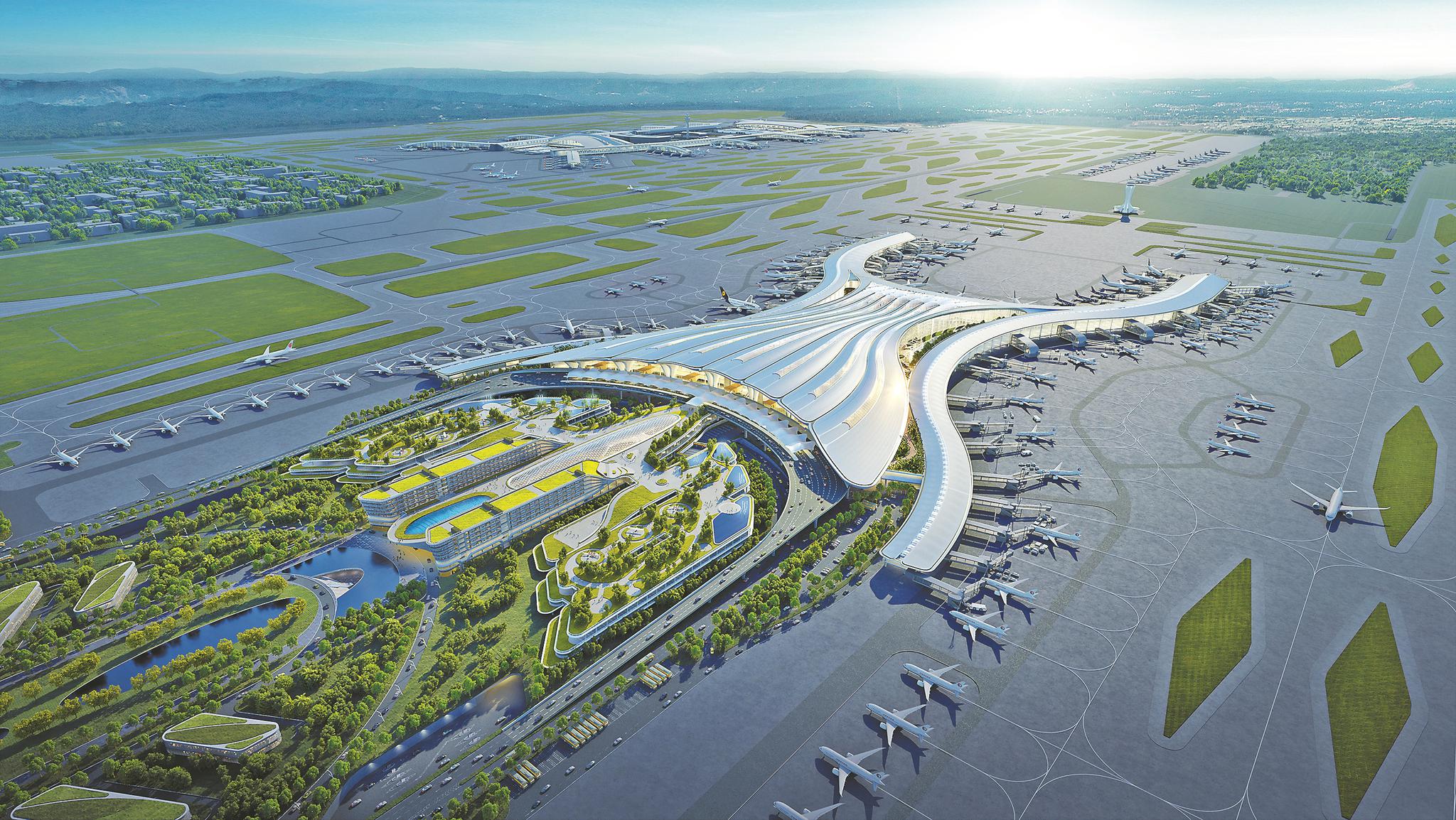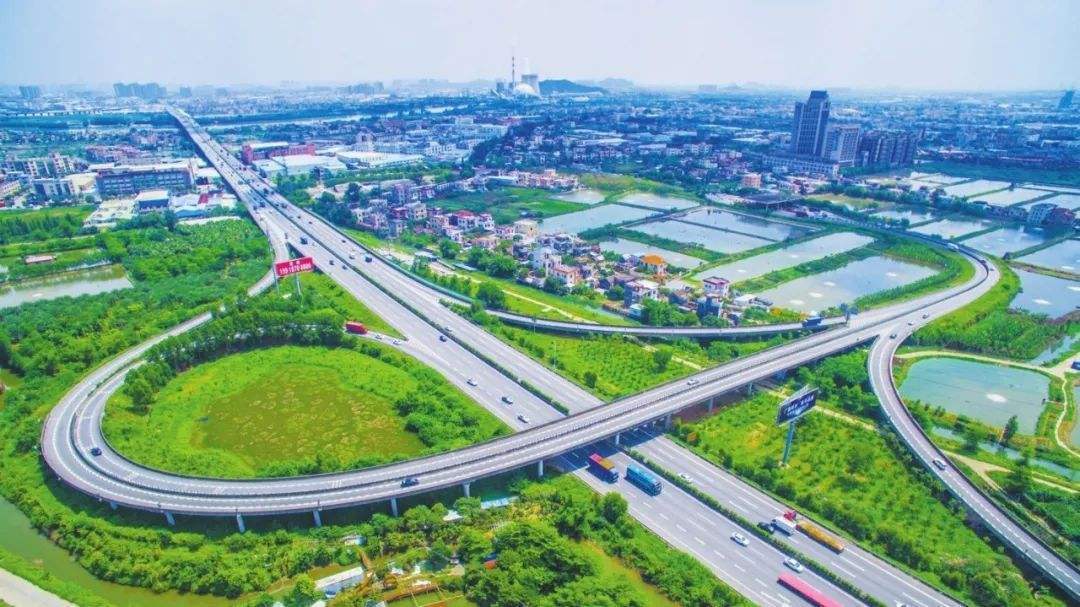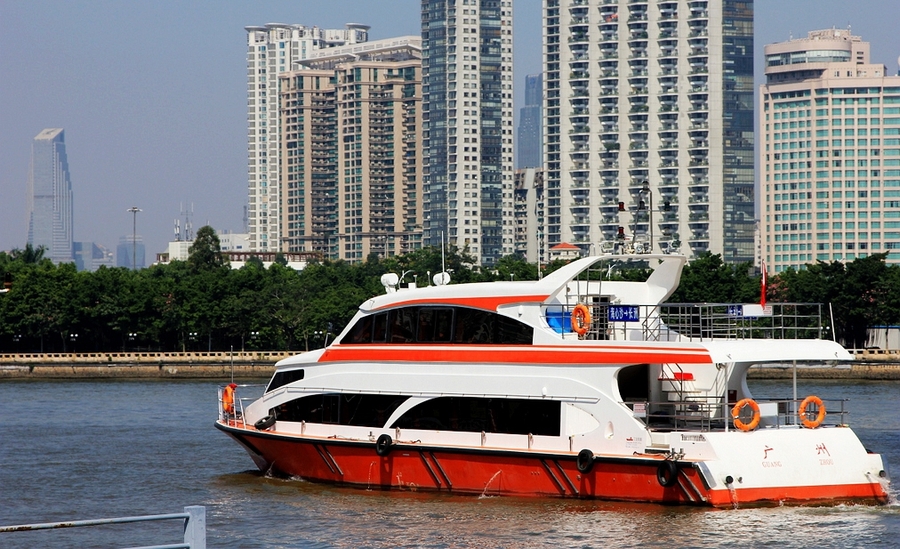Guangzhou is a major transportation hub in Southern China, boasting a highly developed transportation network. The city's subway system has an operating mileage of 653 kilometers, with the highest average passenger intensity in the country. The bus system is equally well-developed, with BRT lines covering 750 pairs of stops across the city, making it the busiest BRT system in Asia. Guangzhou also has a “three-ring, nineteen-radiating” highway network. Baiyun International Airport has topped the national passenger throughput for four consecutive years, and Guangzhou South Railway Station is the busiest high-speed rail station in China.
Guangzhou Railway Transportation
Guangzhou is one of the most important railway hubs in Southern China, with multiple railway stations and a dense network of railway lines. The main passenger railway stations include Guangzhou South Station, Guangzhou Station, Guangzhou East Station, and Guangzhou North Station.
Guangzhou South Station is the core railway station of the Guangdong-Hong Kong-Macao Greater Bay Area, with lines including the Beijing-Guangzhou High-Speed Railway, Guangzhou-Shenzhen-Hong Kong High-Speed Railway, Guiyang-Guangzhou High-Speed Railway, Nanning-Guangzhou Railway, and the Guangzhou-Zhuhai Intercity Railway.
Guangzhou Station is an important node for the Beijing-Guangzhou Railway, Guangzhou-Shenzhen Railway, and Guangzhou-Maoming Railway, and it also connects to the Guangzhou-Foshan-Zhaoqing Intercity Railway.
Guangzhou East Station is a significant transportation hub, with lines covering the Guangzhou-Kowloon Railway, Guangzhou-Shenzhen Railway, and the Guangzhou-Shenzhen Intercity Railway.
Guangzhou North Station, located in Huadu District, is an intermediate station for the Beijing-Guangzhou Railway and the Beijing-Guangzhou High-Speed Railway.
Guangzhou Baiyun International Airport
Guangzhou Baiyun International Airport is an important air hub in Southern China, located about 28 kilometers from the city center. The airport was officially inaugurated in 2004.
Currently, Baiyun Airport has three runways and two terminals, with Terminal 2 opening in April 2018. The airport now operates 136 international and regional routes, connecting to 207 destinations worldwide. In 2024, it handled over 60 million passengers. Future plans include the construction of a fourth and fifth runway, as well as Terminal 3, to further enhance its capacity.
The airport features comprehensive facilities, including business class lounges and first-aid rooms. Additionally, it allows passengers to quickly pass through using facial recognition.
As one of China's three major air hubs, Baiyun Airport serves not only Guangzhou and the Zhujiang (Pearl) River Delta region but also extends its reach to Southeast Asia and connects with Europe and the Americas. It is an important transportation node in the Guangdong-Hong Kong-Macao Greater Bay Area.
Guangzhou Highway Transportation
Guangzhou's highway network is highly developed, making it an important transportation hub in South China. As of 2022, the city's expressway mileage reached 1,144 kilometers. The layout of Guangzhou's expressways is characterized by a "three-ring, nineteen-radiating" structure. The "three rings" include the Guangzhou Ring Expressway, Guangzhou Perimeter Expressway, and the Pearl River Delta Ring Expressway—Shenzhen-Zhongshan Channel—Nanlang Expressway. The "nineteen radiating lines" cover several key expressways, such as the Guangzhou-Qingyuan Expressway, Guangzhou-Shenzhen Expressway, and Guangzhou-Zhuhai West Expressway.
These highway networks not only connect various districts within Guangzhou but also extend to surrounding cities, providing strong support for regional transportation.
Guangzhou Waterborne Passenger Transport
Guangzhou has a well-developed waterborne passenger transport network, which is an important part of the city's transportation system. The Zhujiang (Pearl) River sightseeing cruises and water buses are the highlights of Guangzhou's water transport, catering to the travel needs of a large number of residents and tourists. During the National Day holiday in 2024, Guangzhou's water transport is expected to handle 500,000 passengers, with about 280,000 passengers on the Zhujiang (Pearl) River cruises and water buses. Guangzhou also has important docks such as Nansha Port and Pazhou Port, which offer high-speed ferry services. The Guangzhou Maritime Safety Administration ensures the safety and efficiency of water travel through enhanced vessel safety supervision and the use of information technology.




































